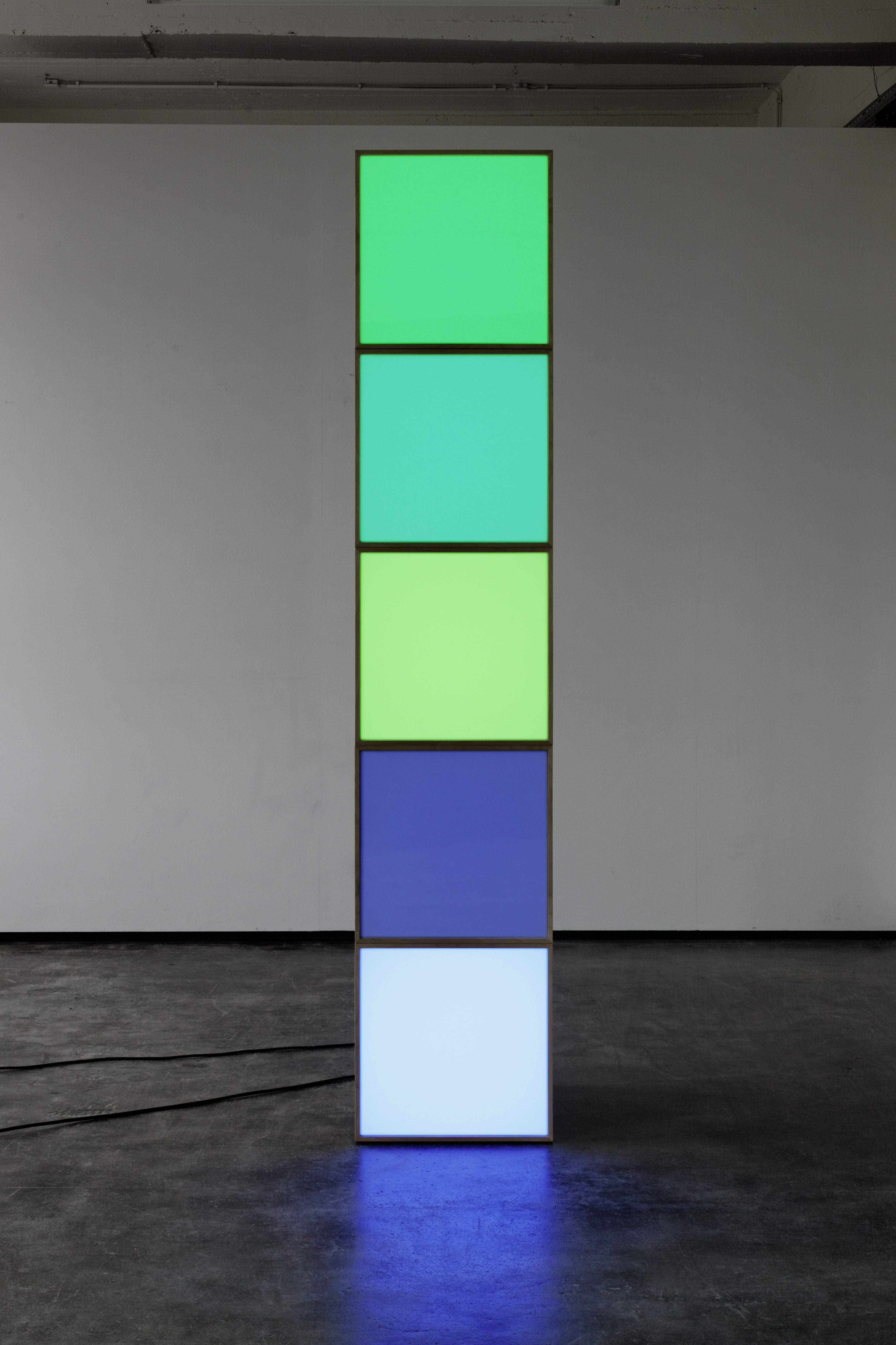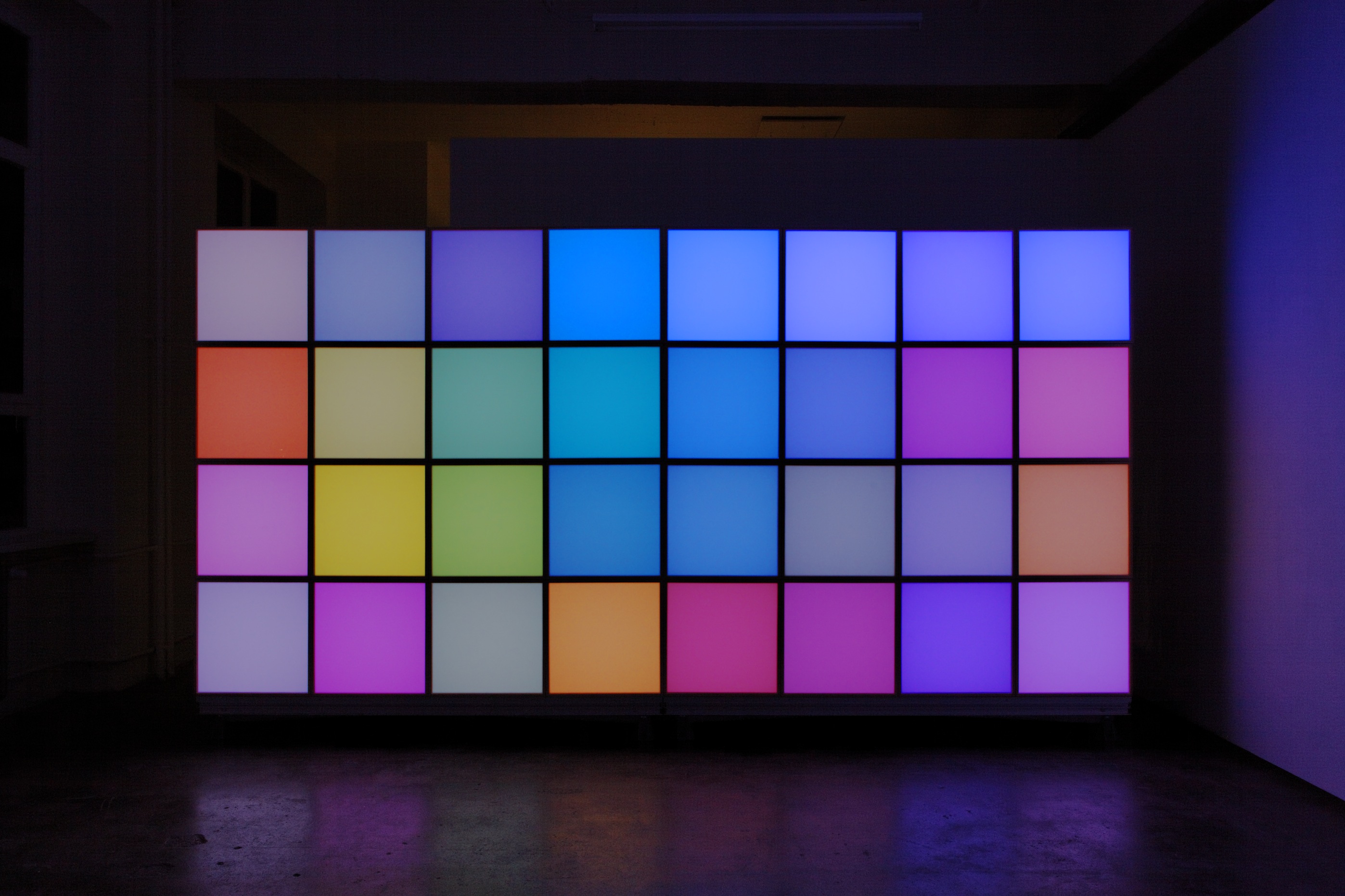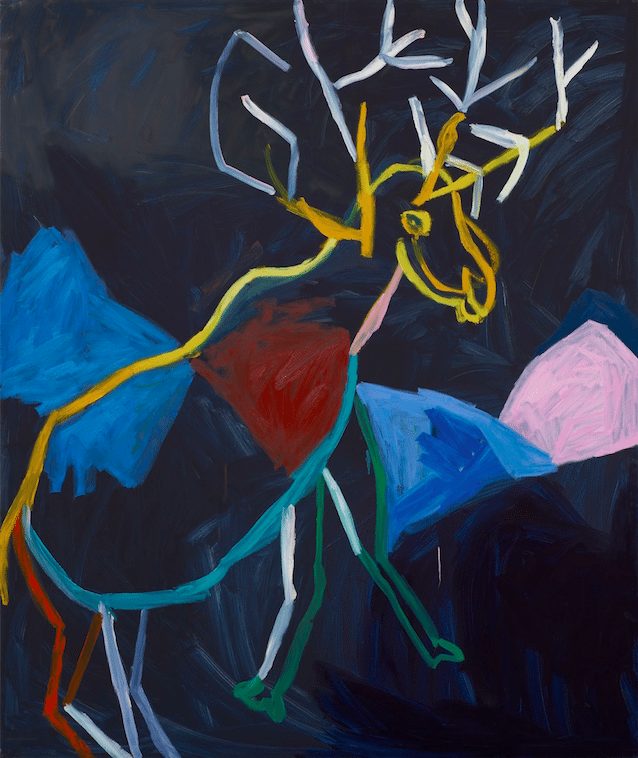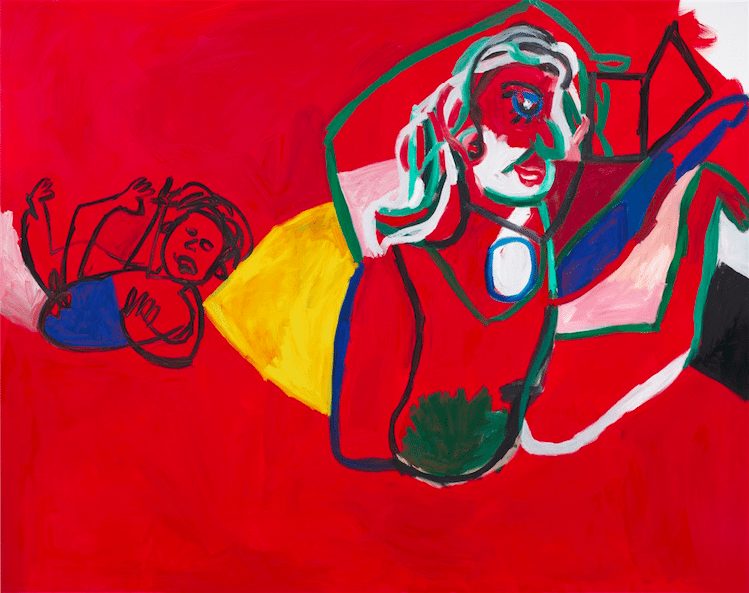Last week, Angela Bulloch & Maria Zerres opened a joint exhibition at Sharjah Art Museum. Considering Dynamics and the Forms of Chaos displays the artists’ recent work as two shows alongside one another, that are brought together by ‘the notion of entropy’. Canadian-born Bulloch has an interdisciplinary practice that encompasses installation, sound and light, while German-born Zerres creates painted works on canvas.
What can we expect to see in Considering Dynamics and The Forms of Chaos?
AB: You can expect to see two solo shows, one side is an exhibition of Maria Zerres’ paintings and drawings and the other side is an exhibition of my sculptures and installations. These two parallel exhibitions have been carefully selected under a theme of entropy. The earliest work of mine shown here is from 1993….up until today.
MZ: I am presenting paintings spanning the last 30 years that are representative of the different bodies of works, series, I have made throughout my practice. For me, chaos is fertile. It’s a fertile concept. This is what I am experiencing here and always. For me, the encounter of cultures is a dynamic process that is also fertile and that is a mirror of my work.
What was the process like for bringing the shows together? Was there a running dialogue as they were formed?
AB: The architecture of the Sharjah Art Museum is long, linear in two wings that join at a central hub and it is symmetrical more or less. So this floor plan conditions the viewer’s experience of seeing the show. To see the show is like walking through a train of works. At the beginning of the show in the central rotunda the viewer must decide to go left or right to see one show or the other and then return to the central hub where both artists are represented, and then carry on to see the other side of the exhibition. So the shows are separate and together and linear.
MZ: The invitation to have an exhibition at the Sharjah Art Museum came from Brigitte Schenk. The concept that frames the two parallel solo shows was developed by co-curator Amira Gad. Angela and I are enjoying the tension, the dynamics and the unexpected relationships and associations that come about from having both our work in parallel to each other. We feel it is opening the mind and crossing borders.
Have you both specifically considered your work in relation to the idea of entropy before, or has this exhibition opened a slightly new area of exploration for you?
AB: I have considered the idea of entropy in my work before in many different ways, one quite basic example is my choice to work with the material copper to clan the outside of a work which was placed outside on the facade of a building in Paris, knowing full well that the copper material will oxidize and become green rather quickly. I designed the work in a way that it would grow into itself over time.
Another way is more conceptual, to do with my fascination with the transmission from a notional state into a physical state with the making of a Pixel Box, from an idea of the smallest element of a picture to the physical, electronic and functional cube that is a Pixel Box. There is a leap happening here, that jumps over different states of being.
MZ: I was not thinking specifically about entropy before. Forms of chaos and order, of course, are crucial to my work and life. The notion of entropy as a framing device and as an umbrella concept for bringing both my and Angela’s work together was conceived by Amira and came out from the research and discussions we all did together in preparation for the show.
What is it about that line between control and chaos that first interested you?
AB: All organizing principals are interesting to me. Rules and systems are at the centre of my practice, and what happens in between those choices or guidelines is the very thing that makes them visible.
MZ: Every creative process starts at the meeting point of chaos and order, of the unexplored / unpredictable and what we know already. It’s a matter of working within this border.
Can you both tell me a little about your decisions to make colour so central to your practice?
AB: Actually I think my choice was to make perception and the engagement of the viewer a central part of my practice — colour is important but I would say that it’s secondary to perception and the consideration of the viewer.
MZ: Colour is as important to any painting as line and form. ‘Who is Afraid of Red, Yellow and Blue’? All elements, colour, line and form, can and will continuously be changed as life itself.
‘Considering Dynamics and The Forms of Chaos’ is showing at Sharjah Art Museum until 31 May









